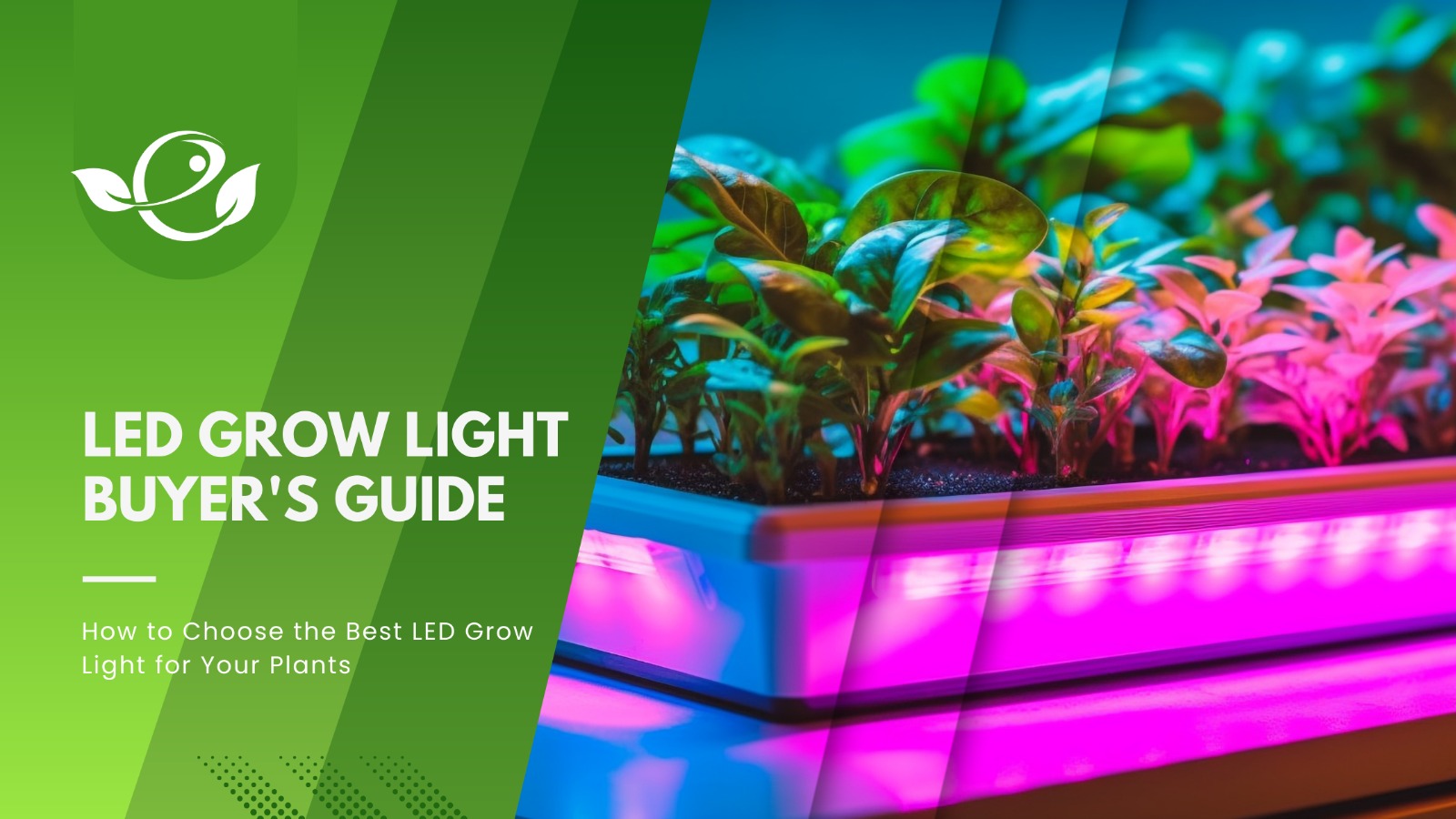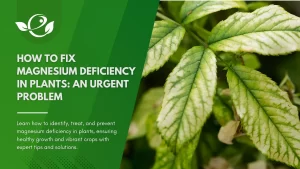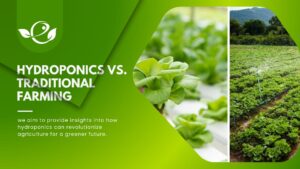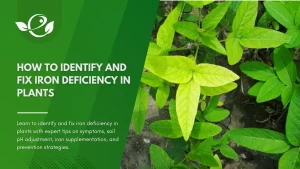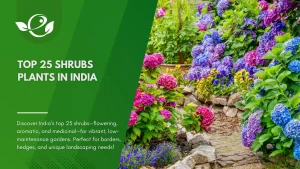Table of Contents
Welcome to our comprehensive LED Grow Light Buying Guide, designed to help you make informed decisions and achieve success in your indoor gardening endeavours. Whether you’re a seasoned gardener or just starting out, choosing the right grow lights is crucial for providing your plants with the optimal conditions they need to thrive.
Indoor gardening has gained immense popularity in recent years, and LED grow lights have become the go-to lighting solution for both professional cultivators and hobbyists. LED lights offer numerous advantages over traditional lighting options, making them a top choice for indoor plant cultivation.
So, why should you consider LED grow lights for your indoor garden? Firstly, LED technology is designed to mimic natural sunlight, providing plants with the specific wavelengths of light they require for photosynthesis. This tailored light spectrum promotes healthy growth, better flowering, and increased yields.
One of the significant benefits of LED lights is their energy efficiency. LED consume less energy compared to other types of grow lights, resulting in lower electricity costs. This not only benefits your wallet but also reduces your environmental footprint. LED lights also have a longer lifespan, reducing the need for frequent bulb replacements and saving you money in the long run.
Compared to traditional lighting options such as High-Intensity Discharge (HID) and fluorescent lights, LED grow lights outperform in terms of light intensity, coverage area, and customization options. With LED lights, you can precisely adjust the light intensity to meet the specific needs of your plants at different growth stages. Additionally, LED lights provide a broader coverage area, ensuring that every plant receives adequate light for optimal growth.
Throughout this buying guide, we will explore the essential factors you need to consider before purchasing LED grow lights. Understanding the light spectrum, intensity requirements, coverage area, energy efficiency, and heat management is crucial for creating an ideal growing environment. We will also provide valuable tips on selecting the right LED grow lights for your specific needs and maintaining them for long-lasting performance.
By the end of this guide, you will have the knowledge and confidence to choose the perfect LED grow lights that will maximize your indoor gardening success. Let’s dive in and unlock the secrets to achieving lush, healthy plants year-round with the power of LED lighting.
Understanding LED Grow Lights
To make an informed decision when purchasing LED grow lights, it’s important to understand the technology behind them and the advantages they offer for indoor gardening. Let’s delve deeper into the world of LED lights and discover why they are the preferred choice for plant cultivation.
Explanation of LED Technology and Its Advantages
LED stands for Light Emitting Diode, which is a semiconductor device that converts electrical energy into light. Unlike traditional lighting options, such as incandescent or fluorescent bulbs, LEDs operate without the need for filaments or gases. This unique design allows LED grow lights to deliver numerous benefits for indoor gardening:
Efficient Light Output: LED lights are renowned for their energy efficiency. They convert a higher percentage of electricity into usable light while minimizing energy wastage in the form of heat. This efficiency not only reduces electricity costs but also ensures that plants receive the maximum amount of light for optimal growth.
Tailored Light Spectrum: Plants have specific light requirements for various stages of growth. LED grow lights can be customized to emit a balanced spectrum of red and blue wavelengths, closely resembling the natural light spectrum. Red light stimulates flowering and fruiting, while blue light promotes vegetative growth. The ability to tailor the light spectrum ensures that your plants receive the ideal lighting conditions throughout their lifecycle.
Precision Light Intensity: LED grow lights provide excellent control over light intensity. By adjusting the brightness or using dimmable LED lights, you can meet the specific light intensity requirements of different plant species and growth stages. This level of control allows you to optimize growth rates, encourage robust development, and promote higher yields.
How LED Lights Mimic Natural Sunlight
Plants have evolved to rely on sunlight for photosynthesis, the process through which they convert light energy into chemical energy. LED grow lights are designed to mimic the spectrum of natural sunlight, providing plants with the necessary wavelengths for photosynthesis.
LED lights emit both red and blue light, which are key components of the visible light spectrum that plants absorb. Red light, with a longer wavelength, is crucial for triggering flowering and fruiting processes. It enhances the production of pigments, essential oils, and sugars, leading to healthier blooms and higher crop yields.
On the other hand, blue light, with a shorter wavelength, is essential for vegetative growth and leaf development. It stimulates the production of chlorophyll, which is vital for photosynthesis. By combining red and blue light in the right ratios, LED grow lights create an optimal environment for your plants, promoting healthy growth from seedlings to harvest.
Benefits of Using LED Lights in Terms of Energy Efficiency and Cost-Effectiveness
LED grow lights are renowned for their energy efficiency, making them a cost-effective lighting solution for indoor gardens. Compared to traditional lighting options, such as High-Intensity Discharge (HID) lights or fluorescent bulbs, LEDs consume significantly less energy while delivering equivalent or even superior light output.
The energy efficiency of LED grow lights has a twofold impact. Firstly, it lowers your electricity bills, allowing you to save on energy costs in the long run. LED lights can operate for thousands of hours without needing to be replaced, reducing the need for frequent bulb changes and further reducing maintenance expenses.
Secondly, LED lights produce less heat compared to traditional lights, minimizing the need for additional cooling systems. Excessive heat can damage plants or disrupt their growth, so LED grow lights’ ability to produce focused light without excessive heat output is advantageous for maintaining an ideal growing environment.
In addition to energy savings and reduced heat emission, LED grow lights have a longer lifespan compared to traditional lighting options. With proper maintenance, LED lights can last for tens of thousands of hours, providing reliable and consistent lighting for your indoor garden.
Comparison with Other Types of Grow Lights (HID, Fluorescent) and Why LED is Superior
When considering the best lighting option for your indoor garden, it’s important to compare LED grow lights with other types of grow lights, such as High-Intensity Discharge (HID) lights and fluorescent bulbs. Here’s why LED grow lights stand out as the superior choice:
Energy Efficiency: LED grow lights are significantly more energy-efficient than HID lights and fluorescent bulbs. HID lights, such as Metal Halide (MH) and High-Pressure Sodium (HPS) lamps, consume a large amount of energy and produce substantial heat. Fluorescent bulbs, although more efficient than HID lights, still pale in comparison to LED lights when it comes to energy savings. LED lights convert a higher percentage of electricity into usable light, resulting in lower energy consumption and reduced electricity costs.
Lifespan: LED grow lights have a much longer lifespan compared to HID lights and fluorescent bulbs. HID lights typically last around 10,000-20,000 hours, while fluorescent bulbs have an average lifespan of 10,000-15,000 hours. In contrast, LED grow lights can last anywhere from 50,000 to 100,000 hours or more, depending on the brand and model. This extended lifespan means less frequent bulb replacements, reducing maintenance costs and ensuring consistent light output for a longer period.
Light Spectrum Customization: LED grow lights offer superior spectrum customization compared to HID lights and fluorescent bulbs. HID lights have a limited spectrum and require additional bulbs or fixtures to achieve the desired light spectrum for different growth stages. Fluorescent bulbs provide a broader spectrum than HID lights but still lack the precision and flexibility of LED lights. LED grow lights can be customized to emit the specific wavelengths of light required for each stage of plant growth, resulting in optimized growth rates, flowering, and fruiting.
Heat Management: Heat management is a critical factor in indoor gardening. HID lights, especially HPS lamps, emit a significant amount of heat, which can lead to excessive temperature levels and pose a risk of heat damage to plants. Fluorescent bulbs also generate heat, although to a lesser extent. LED grow lights, on the other hand, produce minimal heat, thanks to their energy-efficient design. This allows for closer positioning to plants without the risk of burning or overheating, providing a more controlled and safer environment for your plants.
Coverage Area and Light Penetration: LED grow lights provide better coverage area and light penetration compared to HID lights and fluorescent bulbs. HID lights tend to have a narrow beam angle, requiring more fixtures to cover a larger area adequately. Fluorescent bulbs have a wider beam angle but struggle with light penetration, especially for plants with dense foliage. LED grow lights offer a wider beam angle and more focused light distribution, ensuring better coverage and deeper light penetration, even in dense canopies.
Considering these factors, it’s clear that LED grow lights surpass HID lights and fluorescent bulbs in terms of energy efficiency, lifespan, spectrum customization, heat management, coverage area, and light penetration. Their superior performance and cost-effectiveness make LED grow lights the preferred choice for indoor gardening enthusiasts.
In the next section, we will explore the factors you need to consider before buying LED grow lights, such as light spectrum, light intensity, coverage area, energy efficiency, and heat management. These considerations will guide you in selecting the perfect LED grow lights for your specific indoor gardening needs.
Factors to Consider Before Buying LED Grow Lights
Investing in the right LED grow lights is crucial for the success of your indoor garden. To help you make an informed decision, consider the following factors before purchasing LED grow lights:
Light Spectrum
Choosing the right spectrum of light is essential for optimal plant growth and development. When considering the spectrum, two key factors should be taken into account:

- Photosynthesis: It’s important to select a light spectrum that supports the energy production of your plants. The McCree curve and absorption peaks of photopigments can provide valuable insights into the specific wavelengths needed for photosynthesis.
- Photomorphogenesis: Photomorphogenesis refers to the use of light to shape plant growth and development. Light not only affects the growth patterns of plants but also influences processes such as flowering, fruiting, and chemical composition.
Spectrum plays a vital role when selecting LED grow lights. The spectrum you choose should match the different stages of growth and development your plants will undergo. Some growers may only need lights for vegetative growth or flowering, while others require fixtures that cover the entire growth cycle from seedling to flower.
There are two main types of spectrums available: targeted and broad.
Targeted Spectrum: Targeted spectrums use specific wavelengths that align with the absorption peaks of chlorophyll. Some brands also include UVA, green, and Far Red diodes. This approach aims to provide an optimal spectrum for plant growth, focusing on photosynthetic efficiency.
Broad Spectrum: Broad-spectrum LED grow lights use white COBs (Chip-on-Board) or lower-powered white diodes, sometimes supplemented with other diodes like UV, to create a well-rounded spectrum. The white diode provides essential wavelengths for plant growth and flowering, resulting in a more natural-looking spectrum. This approach typically includes more green light, making plants’ leaves appear normal rather than pink or purple.
The industry is gradually leaning towards a white light approach due to several reasons:
White light diodes are highly efficient compared to narrowband wavelength diodes.
Plants look more natural under white light, making it easier to diagnose plant diseases or pests.
The spectrum of white light fixtures contains a significant amount of green light, which is absorbed by light-hungry medicinal plants.
LED grow light spectrums can be either tunable or fixed. Fixed spectrums remain constant, while tunable spectrums offer the flexibility to adjust the light output using switches, dimming options, or remote controllers.
Spectral Terms Relevant for White LEDs:
CRI (Color Rendering Index): CRI describes how “full spectrum” a light is, primarily applicable to white LEDs. A higher CRI indicates a light source that reproduces colors as they would appear under full daylight. While high CRI may sound appealing, low CRI phosphors can be more efficient at producing light and running cooler. Understanding CRI can help you choose the most suitable LED grow light for your needs.
CCT (Correlated Color Temperature): CCT measures the perceived “warmth” or “coolness” of a light source. The scale is based on the appearance of a glowing object at different temperatures, measured in Kelvin (K). Higher Kelvin lights emit more blue light, while lower Kelvin lights emit more yellow, orange, and red light. Consider the CCT of LED grow lights to create the desired lighting environment for your plants.
In general, increased blue light benefits vegetative growth by keeping internode distances shorter, resulting in more compact plants. On the other hand, increased red light during the flowering stage helps drive higher yields. However, it’s important to have some red light during vegetative growth for healthy plant development and some blue light during flowering to improve quality.
Ultimately, the best spectrum for your plants depends on the growth stage of your plants and your desired outcomes in terms of quality or yield. Understanding the different spectrums and their effects on plant growth will assist you in choosing the most appropriate LED grow lights for your specific needs.
Light Intensity
Light intensity is a crucial factor to consider when choosing LED grow lights for optimal plant growth. Understanding the importance of light intensity and how to measure it will help you make informed decisions for your indoor garden. Let’s explore the key points on light intensity for LED grow lights.
When it comes to light intensity, it’s essential to provide the right amount of light for your plants’ growth stage and the size of your grow space. Too little light can hinder plant development, while too much light can be damaging. To determine the appropriate light intensity, consider the following factors:
Recommended Footprint: Manufacturers often provide a recommended footprint for their LED grow lights. This information suggests the area that the light can adequately cover. However, it may not provide details on the actual light emitted from the fixture.
PPF Reading: Photosynthetic Photon Flux (PPF) is a measure of the total light output of a lamp, expressed in micromoles per second (umol/s). A higher PPF indicates a greater amount of light emitted. Generally, a PPF above 1100 umol/s can cover a 4′ x 4′ area, while about 1500 umol/s is the top range for that area size.
PAR Chart: Consult the manufacturer’s PAR chart, which represents the Photosynthetic Active Radiation (PAR) readings over the recommended footprint. PAR charts show the intensity and distribution of light across the area. Note that light intensity is typically highest in the center and lower towards the edges and corners. The average Photosynthetic Photon Flux Density (PPFD) is an important specification as it indicates the average light intensity over the given footprint.

Considering the stage of growth, plants in the vegetative stage generally require 300-600 PPFD, while those in the flowering stage need at least 600-1000 PPFD. Higher intensities can be used with CO2 supplementation. Some LED grow lights offer dimmable options, allowing you to adjust the light intensity for seedlings and during veg to save energy.
When it comes to measuring light intensity, it’s important to understand the different metrics used:
Wattage: Wattage is a measure of electricity consumed by the grow light. However, the wattage mentioned by manufacturers can sometimes be misleading. It’s crucial to know the actual power draw of the fixture, which is the wattage it uses when plugged into the wall.
PPF: Photosynthetic Photon Flux (PPF) measures the total amount of light produced by a grow light, expressed in micromoles of photons per second (umol/s). It provides an accurate measurement of the light output.
PPFD: Photosynthetic Photon Flux Density (PPFD) measures the amount of light (micromoles of photons) striking a square meter per second. PPFD readings indicate the intensity of light that reaches the plant’s surface.
PAR: Photosynthetic Active Radiation (PAR) refers to the range of light wavelengths (400 to 700nm) that can be absorbed by plants for photosynthesis. It’s an important consideration when evaluating the spectrum of light emitted by LED grow lights.
Lumens: Lumens measure the apparent brightness of a light source as perceived by the human eye. However, lumens are not an ideal measure of light intensity for plants because they don’t accurately represent the number of photons produced.
Lux/Footcandle: Lux and footcandle are measurements of the brightness striking a unit of area, providing an indication of the light intensity at a specific location.
By understanding the light intensity and how to measure it, you can select LED grow lights that provide optimal light levels for your plants’ specific growth stages. Consider the recommended footprint, PPF readings, PAR charts, and the desired PPFD range for your plants. Additionally, pay attention to the actual power draw (wattage), as well as other metrics like PPF, PPFD, PAR, and lux/footcandle to assess the light intensity accurately.
Remember, finding the right balance of light intensity is crucial for promoting healthy growth and maximizing yields in your indoor garden.
Coverage Area
Choosing the right grow light size is crucial for maximizing plant growth in your space. Popular grow area sizes for hobbyists range from 2’x2′ to 4’x4′, and larger setups can extend to commercial-scale operations spanning hundreds or thousands of square feet.
When selecting a grow light, it’s important to ensure it covers the entire area effectively. Most powerful lights can cover a 4’x4′ space for flowering, with some larger fixtures extending up to 5’x5′. However, it becomes challenging to find lights that maintain uniform intensity beyond these sizes. In such cases, it’s advisable to use multiple smaller lights to achieve even light distribution across a larger area.
For instance, in an 8’x8′ space, it’s better to opt for four lights covering 4’x4′ each, rather than a single, extremely powerful light that may result in uneven lighting. Similarly, in smaller areas like 2’x4′, you can choose a light specifically designed for that space or use two lights covering 2’x2′ each. Avoid using a light that claims to cover a larger area, like 3’x3′, as it may lead to an inconsistent footprint.
Some grow light fixtures utilize lenses to concentrate light onto the plants. These lights are typically positioned higher above the plants, around 18 inches or more, to prevent overexposure. Lenses help maintain a defined circle, square, or rectangle of light footprint.
On the other hand, certain LED grow lights disperse light more evenly without lenses, resulting in softer and less defined edges in their footprint. Depending on the light’s design, they can be placed higher above the canopy or as close as 6 inches. The choice between lenses and no lenses depends on your specific application or preference.
Different manufacturers may have varying perspectives on lenses and their impact on light distribution. It’s advisable to refer to the fixture’s PAR (Photosynthetically Active Radiation) map to understand how the emitted light is distributed. These PAR maps provide valuable information regarding light intensity and uniformity across the recommended footprint.
To make an informed decision, examine the PAR maps and consider the following questions:
How intense is the light at a specific distance?
How uniform is the light distribution across the suggested footprint?
Are the PPFD (Photosynthetic Photon Flux Density) values high (e.g., above 1000 PPFD) or low (e.g., below 300 PPFD)?
Will these intensities be sufficient for your specific stage of plant growth?
By considering these factors and relying on accurate PAR maps, you can determine the suitable grow light for your space and ensure optimal conditions for your plants’ growth.
Energy Efficiency and Wattage Draw
When it comes to choosing the right grow light for your plants, wattage alone is not the best indicator of its performance. While wattage has been traditionally used to estimate a fixture’s potential, it does not directly translate to light output. The efficiency of a fixture plays a crucial role in determining how much light it emits per watt.
For example, a 500W light with an efficacy of 2.5 umol/j will have a photosynthetic photon flux (PPF) of 1250 umol/s. On the other hand, a 600W light with an efficacy of 2.0 umol/j will only have a PPF of 1140 umol/s, despite using more watts. This demonstrates that wattage alone is not sufficient to gauge a fixture’s light output.
In recent years, we’ve seen lights that draw as little as 480W while covering a 4′ x 4′ area, whereas other fixtures drawing around 800W can cover slightly larger areas. The variation in wattage can be attributed to efficiency, with higher-wattage fixtures often delivering higher PPFD readings across the growing area.
If energy consumption is a concern, you might consider a lower power fixture. However, if you prioritize light quality and performance over energy efficiency, other specifications should be taken into account.
For commercial growers, wattage draw, efficacy, and light output are crucial factors due to the cumulative energy costs. They aim to maximize light output while minimizing wattage usage.
It’s important to be cautious when evaluating fixtures labelled as ‘1000W’ or ‘600W’ as these figures often refer to diode wattage rather than the actual power draw. Some falsely advertised fixtures may draw significantly less power than their proclaimed wattage suggests.
The wattage per square foot for flowering can vary, typically ranging between 30W and 40W. There is no universal answer, as different growers use fixtures with varying efficacies and flower at different intensities.
Lastly, ensure that the light you choose is compatible with your voltage requirements. Most home growers in the USA use 120V, while commercial setups may utilize 240V or higher. Many LED grow lights today have flexible drivers and can accommodate voltage ranging from 110V to 277VAC.
To summarize, while wattage can serve as a general guide, it is recommended to focus on factors like PPFD readings, uniformity, and total light output in umol/s when selecting an LED grow light. These aspects provide a more accurate assessment of a fixture’s performance and suitability for your specific needs.
Heat Management
Efficient thermal management is crucial for LED longevity and performance. LED manufacturers typically recommend operating temperatures below 85°C (185°F). There are two main approaches to heat management:
Active cooling: This method involves using energy to lower the temperature of the LED. The most common approach is to utilize fans blowing over a heat sink. Another popular method is liquid cooling, which utilizes water’s high heat capacity. Quality manufacturers incorporate safeguards to protect LEDs from overheating and automatically shut off the light in case of malfunctions.
Passive cooling: Unlike active cooling, passive cooling doesn’t require additional energy. However, it may involve higher upfront costs and result in a heavier end product. Important factors for a high-quality heatsink include the choice of material (such as aluminium), shape (e.g., pin fin), anodization, and production process (e.g., extrusion or cold forging).
Efficient thermal management ensures that LEDs remain cool, extending their lifespan and optimizing their efficiency.
Warranty
Check the warranty provided by the manufacturer. A warranty provides peace of mind and protects you against any potential defects or performance issues with the LED grow lights. Look for warranties that cover a reasonable duration, typically ranging from 1 to 5 years, or even longer in some cases.
Price
Consider your budget when selecting LED grow lights. LED lights come in a range of prices depending on factors such as brand, features, and quality. While it can be tempting to opt for the cheapest option, remember that quality and performance are crucial. Investing in higher-quality LED grow lights may result in better plant growth, energy efficiency, and durability in the long run.
It’s important to strike a balance between cost and quality. Look for LED grow lights that offer a good balance of features, performance, and affordability. Read customer reviews and compare prices to make an informed decision that aligns with your budget and gardening goals.
In conclusion, considering these factors before purchasing LED grow lights will help you make a well-informed decision and set up an ideal lighting environment for your indoor garden. Assess the light spectrum, light intensity, coverage area, energy efficiency, heat management, warranty, and price to ensure you choose the best LED grow lights for your specific needs.
In the next section of this guide, we will provide valuable tips on selecting the right LED grow lights based on the size of your indoor garden, plant types, and specific growth requirements. Stay tuned to discover how to maximize your indoor gardening success with the perfect LED lighting setup.
Choosing the Right LED Grow Lights for Your Plants
Different plants have varying light requirements, and choosing the right LED grow lights based on their specific needs is crucial for their growth and productivity. Consider the following tips to select the perfect LED grow lights for your plants:
Research the Light Requirements of Your Plants
Light Intensity: Determine the light intensity needs of your plants at different growth stages. Some plants, like leafy greens and herbs, thrive under lower light intensity, while flowering plants and fruits may require higher intensity levels. Refer to plant-specific guides or consult with experts to understand their light intensity preferences.
Light Spectrum: Research the preferred light spectrum for your plants. Certain plants, such as leafy greens, benefit from a higher proportion of blue light for vegetative growth. Others, like flowering plants, require a balanced spectrum of red and blue light to support flowering and fruiting. Tailor the light spectrum accordingly to provide optimal conditions for your plants

Consider the Size of Your Growing Space
Coverage Area: Measure the size of your growing space to determine the appropriate coverage area for your LED grow lights. Consider the number of plants and their arrangement to ensure uniform light distribution. LED grow lights are available in various sizes and wattages, so choose ones that can adequately cover your entire garden.
Hanging Height: Take into account the recommended hanging height of the LED grow lights. Different plants have specific light requirements at different distances from the light source. Adjustable hanging options allow you to maintain the optimal distance as your plants grow taller.
Quality and Reliability
Brand Reputation: Opt for LED grow lights from reputable brands known for their quality and reliability. Research customer reviews, ratings, and testimonials to gauge the performance and durability of the lights. Established brands often provide better customer support and warranty coverage.
Build Quality: Examine the build quality of the LED grow lights. Look for lights with sturdy construction and proper heat dissipation mechanisms. A well-built light ensures longevity and reduces the risk of malfunction or heat damage.
Energy Efficiency and Power Consumption
Energy Efficiency Rating: Check the energy efficiency rating of the LED grow lights. Look for lights with high-efficiency ratings, as they consume less electricity while providing optimal light output. Energy-efficient lights not only save on electricity costs but also contribute to a more sustainable indoor gardening setup.
Power Consumption: Consider the power consumption of the LED grow lights and ensure they align with your electrical capacity. Factor in any additional energy requirements for cooling systems or ventilation fans, if necessary
Additional Features and Customization Options
Dimming Capabilities: LED grow lights with dimming capabilities offer greater control over light intensity, allowing you to cater to the specific needs of your plants at different growth stages. This feature is especially useful if you grow a variety of plant species in the same space.
Timer Functionality: Some LED grow lights come with built-in timers that automate lighting schedules. This feature allows you to mimic natural day and night cycles, ensuring consistent and optimized light exposure for your plants.
Remember to evaluate these factors and prioritize the needs of your plants when choosing LED grow lights. Every plant is unique, and providing them with the right lighting conditions is essential for their overall health and productivity.
That’s It!
Choosing the right LED grow lights and maintaining them properly is essential for successful indoor gardening. Consider the light requirements of your plants, the size of your growing space, energy efficiency, and additional features when selecting LED grow lights. Regular cleaning, checking for damage, and maintaining optimal distance and hanging height will ensure your lights perform optimally for years to come.
Investing in quality LED grow lights and following proper maintenance will result in healthy plant growth, higher yields, and a more sustainable and efficient indoor gardening setup. Remember to research and stay updated on advancements in LED grow light technology to make informed decisions and continually improve your indoor gardening experience.
With the right LED grow lights and proper care, you can create an ideal environment for your plants to thrive, regardless of the season or climate. Start your journey to successful indoor gardening with the power of LED grow lights today!
